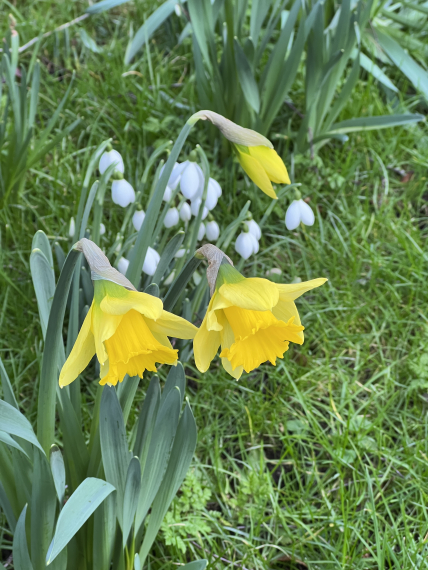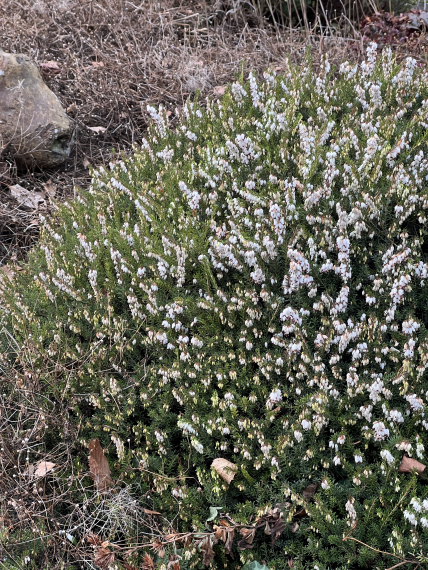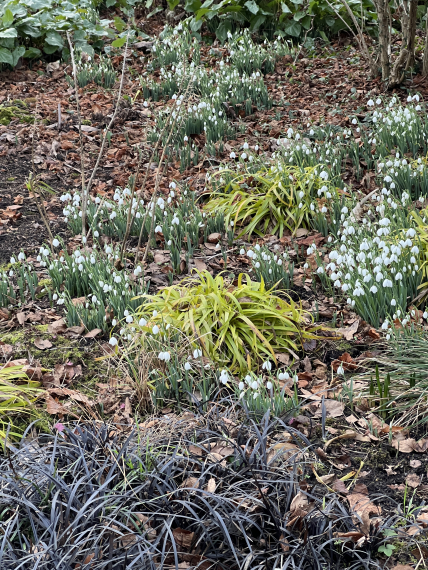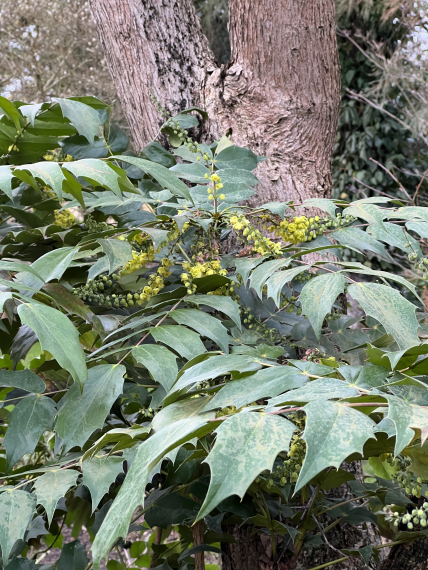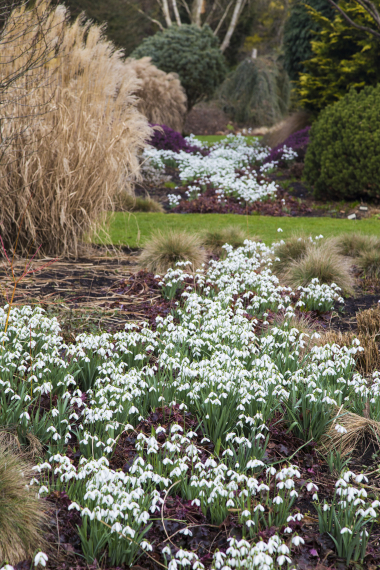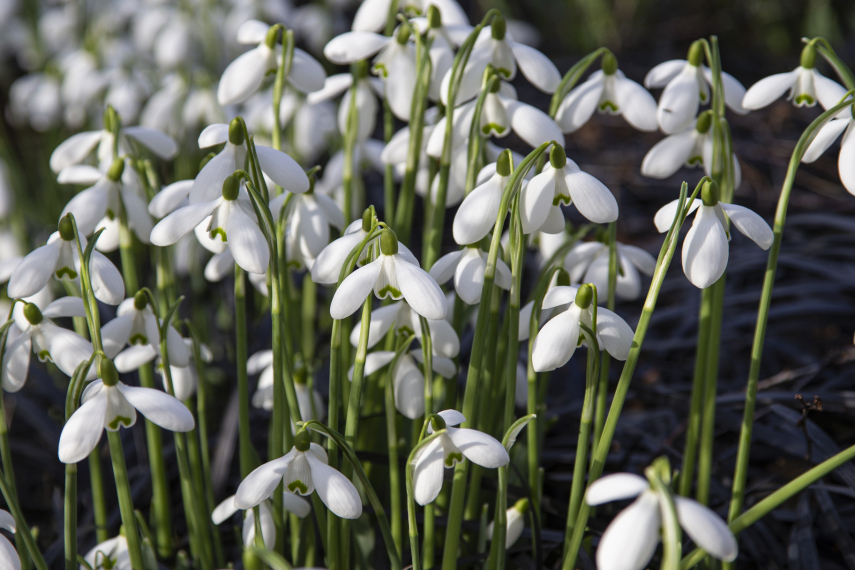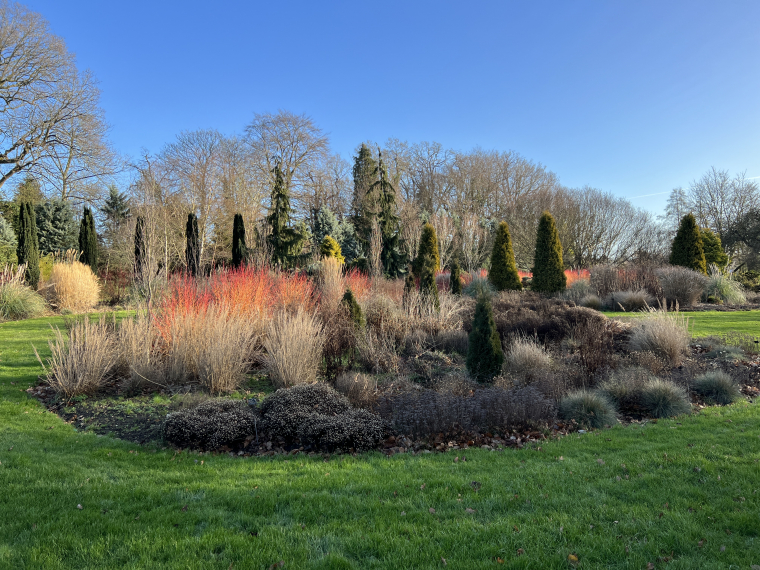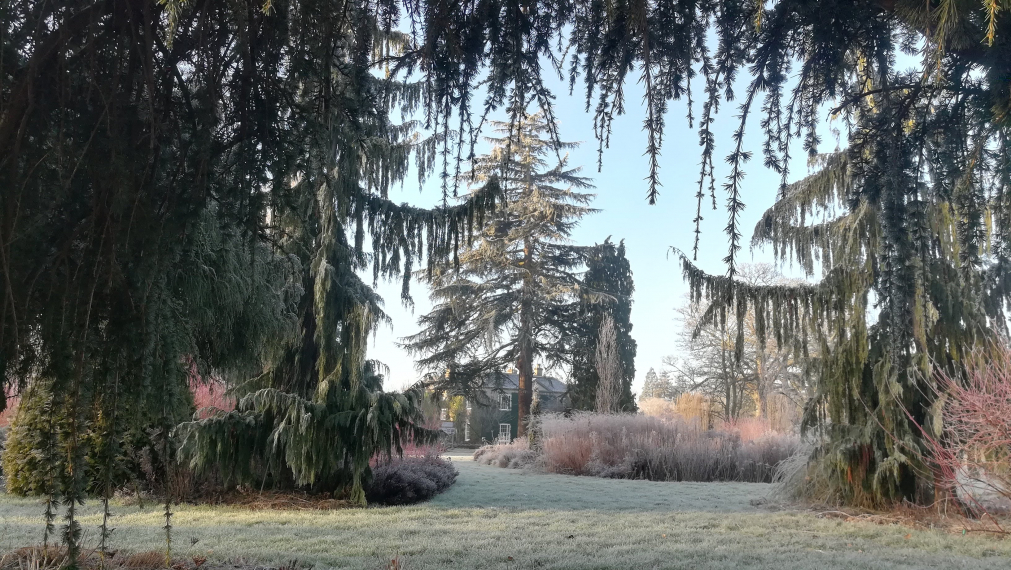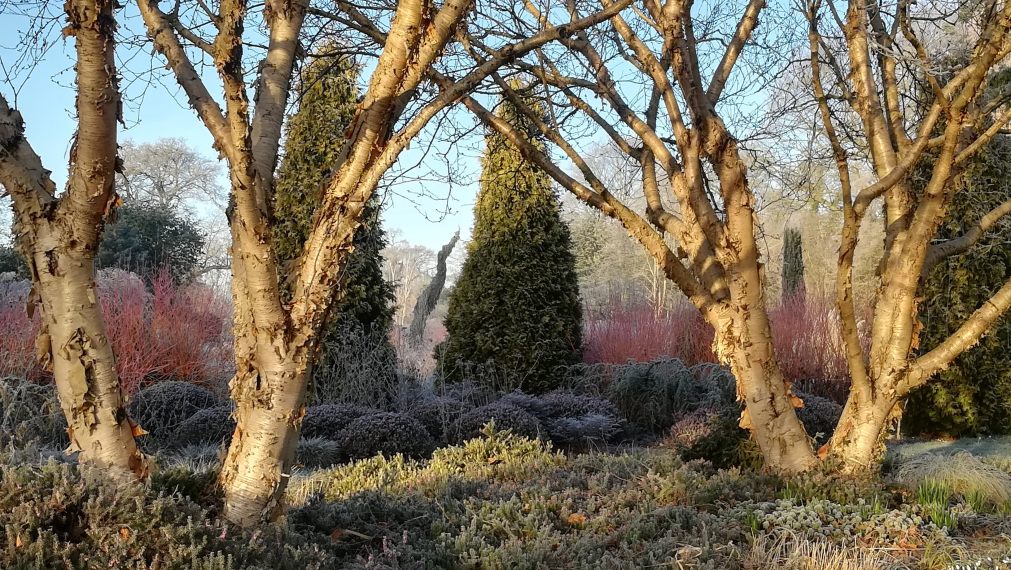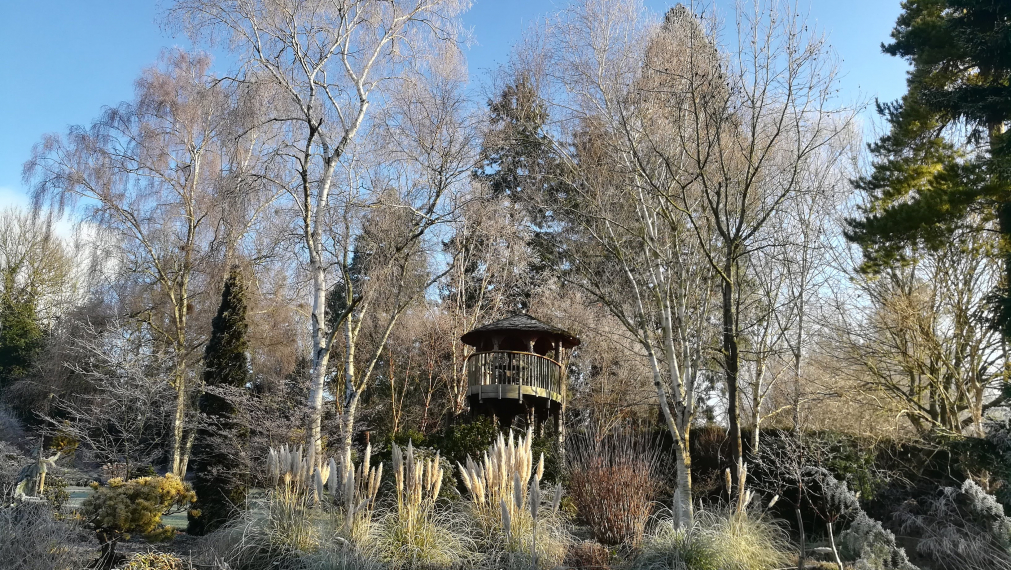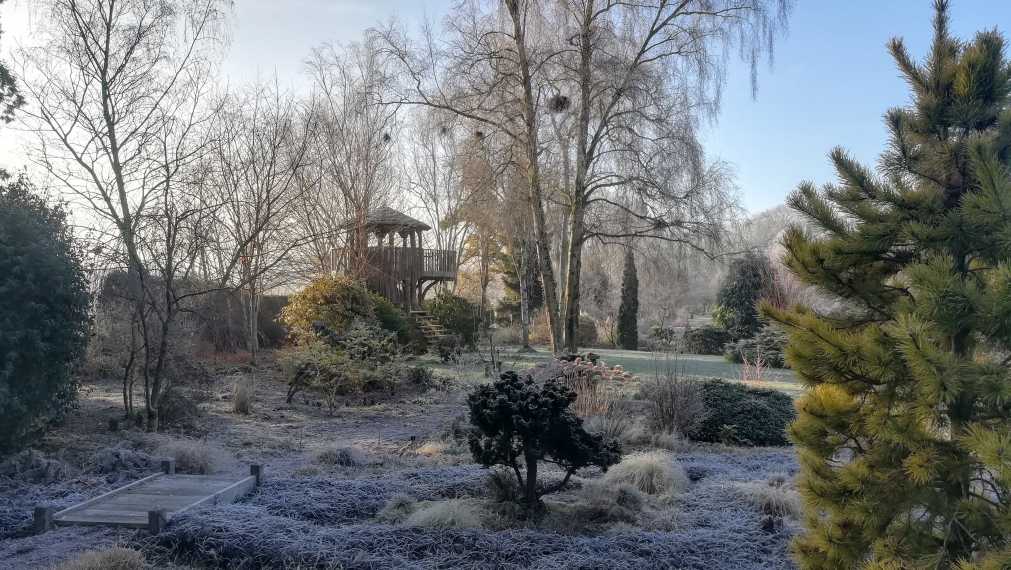Ideas for Planting in Containers
Image above: Chionochloa \’Rubra\’ planted in a container.
Perennials and grasses make great plants in containers, which Adrian Bloom has been experimenting with over many years.
The advantage with perennials and grasses is that if you choose plants that are hardy, they can be left outside (although pots rather than the plants may need some protection against frost). The plants will start showing interest early in the season and if chosen carefully continue to look attractive almost until the autumn frost. Here are a few ideas:
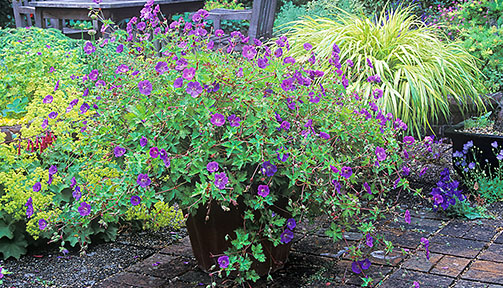
Geranium ‘Rozanne’ – you just can’t lose out with ‘Rozanne’, as whether it’s in the garden on its own, or as a river, or in pots and containers it takes quite a bit to beat its sheer flower power during the height of summer and on into the autumn once cut back. Here is a container on Adrian’s terrace, a 3-year-old plant.

Although slightly more difficult to handle, is this image of a sport from \’Rozanne\’ called ‘Azure Rush’ in a hanging basket. It works pretty well but you need to have a large enough hanging basket and the plant must be kept well watered – and feeding if it goes into its second year, or even later in the season.

Ophiopogon planiscapus ‘Nigrescens’, the black-leaved member of the lily family is an extremely useful partner for summer and other seasons too. You can see it here in combination with Brunnera ‘Jack Frost’, which earlier in the spring had pale blue forget-me-not flowers and now cut back in May has made a display with its attractively marbled leaves. A good substitute for a hosta, as slugs seem less interested.
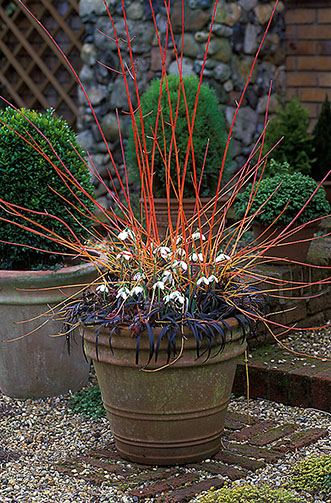
If you want something for winter interest, what could be more showy than this larger container showing the stems of Cornus sanguinea ‘Midwinter Fire’ in early February, underplanted with Ophiopogon and splashed with the fragrant white flowers of our favourite snowdrop, Galanthus ‘S Arnott’ (it seems a pity that such a great snowdrop has such an uninspiring name – we could suggest ‘White Wonder’, or ‘Arnott’s White Wonder’!).
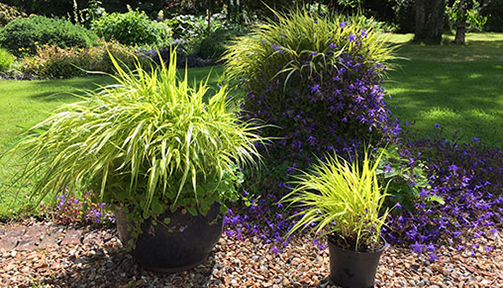
This picture of Hakonechloa macra ‘Alboaurea’ in 3 containers tells a story. The smaller one on the right foreground is a 2 litre plant straight from our Bressingham Gardens nursery. This is ideal to pot on this summer into a larger container such as that on the left, which has been in a pot for 2 years with Campanula ‘Blue Waterfall’ beneath. Behind is an older specimen in a larger container, amongst Campanula porscharskyana, which has the capacity to climb up the pot and into the foliage of the Hakonechloa. This is quite spectacular, but as soon as the Campanula has finished main flowering it should be cut back to the base allowing the Hakonechloa to drape gracefully over the side.

This image shows the still-attractive foliage in late autumn as it has died back. The plant is quite happy to overwinter in a container unless we get below -10 C for more than a week or more, which hasn’t happened here for many years. The old foliage can be cut back to the base in March before new growth starts.

Imagine this view out of your kitchen window on a frosty winter’s day. These ornamental grasses are in containers and have made a lot of growth during the earlier part of the year. The three on the right are forms of Carex (l-r: Carex ‘Frosted Curls’, the plant with the long tassels is Carex comans ‘Bronze’ form, and Carex ‘Everillo’), all evergreens, whilst the plant on the left is Hakonechloa macra ‘Alboaurea’, with growth that has become dormant but leaving the grass to reflect the autumn and winter weather.
Perennials and grasses should be grown in a reasonably open compost, ideally with sufficient fertilizer to last a full growing season. For the following years add a slow- release granular fertilizer to cover each season unless you have a drip-feed fertilizing system. Getting any well-established plant out of some containers can be a problem. Lining with polythene prior to potting may help, as perennials and grasses will need dividing and re-potting every few years. Better still is to select containers that do not curve in at the top, in other words straight-sided – whether square or round.
Containers are in theory a moveable commodity, but the larger they get the more difficult they become. We use a sack barrow, which helps, but you need two people to help manoeuvre your containers to a new position. As ever, plants in containers need watering—and while they should not be too wet, perennials and grasses should never be allowed to dry out in the summer. You can almost never overwater a breathable terracotta pot, but other materials such as plastic or steel will need ‘crocks’ at the base to allow water to drain through the holes at the base, before compost is put in.
You can buy many of these plants from our nursery online.





